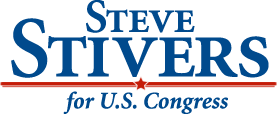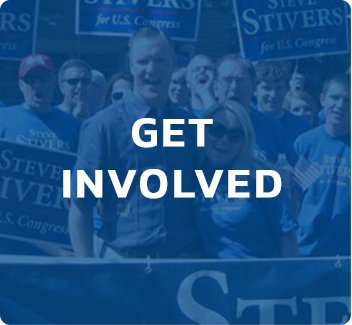BACK TO NEWS
Bipartisanship, sweat equity made national designation official
10/27/2018By Jessica Wehrman
The Columbus Dispatch
WASHINGTON — As Alex Fischer of the Columbus Partnership recalls, the spark began during a meeting between Leslie H. Wexner, chairman and CEO of L Brands, and Ohio Gov. John Kasich.
The two were on the 30th floor of the Riffe Tower, surveying the site where they hoped the replacement to the Franklin County Veterans Memorial would be.
“The governor made the comment, ‘Gosh, why not make that a state memorial?’” Fischer said.
It was the beginning of an idea that became increasingly ambitious, evolving into a national memorial, and has resulted in the construction of a sweeping attempt to properly honor every veteran from every branch of the military in U.S. history. That result, the National Veterans Memorial and Museum, will open Saturday, the result of an all–hands–on–deck effort from local, state and federal government, the business community and private citizens.
But organizers couldn’t just tag the site as the home of the National Veterans Memorial and Museum. They needed to make it official.
They were buoyed by generous donations and support of heavy–hitters — both Les and Abigail Wexner and former Sen. John Glenn gave their blessings, with the Wexners donating $40.6 million for the cause — but there was still the matter of the name.
“You can call it (the National Veterans Memorial and Museum), but it’s hard to put it on a sign if you don’t have the designation,” Fischer said.
Bruce Soll, senior vice president for L Brands, contacted U.S. Rep. Steve Stivers: How would they go about making the memorial a national memorial?
Stivers’ advice was of the “ask for forgiveness, not permission” variety: He told them just to start calling the memorial the national veterans memorial.
“That’s the advantage of the status quo,” Stivers, a Columbus-area Republican, recalled telling Soll. “You can’t call it one thing and then change it later. So just name it the national memorial and we’ll work to get the designation.”
From the beginning, said Rep. Joyce Beatty, a central Ohio Democrat, “there was talk that this was bigger than just Columbus, Ohio. It was going to be a national museum.”
But to make that happen, they needed the federal government’s blessing. Beatty, whose district would include the monument, and Stivers, a brigadier general in the Ohio Army National Guard, worked with then-Rep. Pat Tiberi, a Delaware County Republican, to introduce a bill to designate the memorial as the National Veterans Memorial and Museum in September 2016. The bill went nowhere — it was an election year.
They reintroduced the bill in 2017 and got to work, but they were surprised to be greeted with raised eyebrows.
First, there was some skepticism from those who were accustomed to the old monument, said Beatty. They had to be convinced of the benefits of the “brand new concept” of a museum that covered all eras of U.S. history. Then, there was resistance from some lawmakers who thought Columbus was an odd choice for a national museum.
“They’d say, ‘Why not Washington? Why not Philadelphia?’” Beatty recalled.
Stivers and Beatty made the case: Columbus is within an eight-hour drive of half of the nation’s veterans. The state has the sixth-largest veterans’ population in the U.S.
And the museum was to honor a group that needed honoring.
“The story of our veterans is the story of our country,” said Stivers, a veteran of the Iraq War.
They cornered lawmakers and staff members in hallways and corridors, managing to line up support from every member of Ohio’s congressional delegation. They sent key staffers to every hearing they could where the issue might come up. And finally, in September, with the building already under construction, Beatty and Stivers wedged themselves behind a conference table on Capitol Hill. They both testified that Columbus should be the home of the National Veterans Memorial and Museum.
“It was not something that just flew through the committee,” Beatty said. “We put a lot of sweat equity into it.”
Both Stivers and Beatty emphasized the museum’s location, and both reminded the committee that the monument was already under construction and fully funded.
“We weren’t asking for a big chunk of government money and a name,” Stivers said. “We were really just asking for the name.”
The Department of Veterans Affairs neither supported nor opposed the idea, saying it did not apply to the VA’s core mission. But the Veterans of Foreign Wars gave it full-throated support, with John Towles, deputy director of national legislative service for the VFW, telling the subcommittee that the nation lacked a museum dedicated to honoring and preserving the collective sacrifices made by the nation’s veterans. “This museum would serve to fill that gap,” he said.
The bill passed the House on Nov. 7, 2017.
It also had to go through the Senate. Sherrod Brown and Rob Portman cosponsored it, and Portman, a member of the Senate Committee on Energy and Natural Resources, pushed the bill through the committee process, backing it in a hearing in July 2017. The committee passed it in May 2018, and the full Senate passed the bill on June 6.
Portman said the museum would be “a tribute to the bravery and sacrifice of veterans from Ohio and all across America.” Brown, meanwhile, said the designation “will honor all of America’s veterans and attract new attention to this important landmark.”
On June 21, President Donald Trump signed the bill into law.
The museum’s claim of being a “national” museum finally had the government’s blessing.




